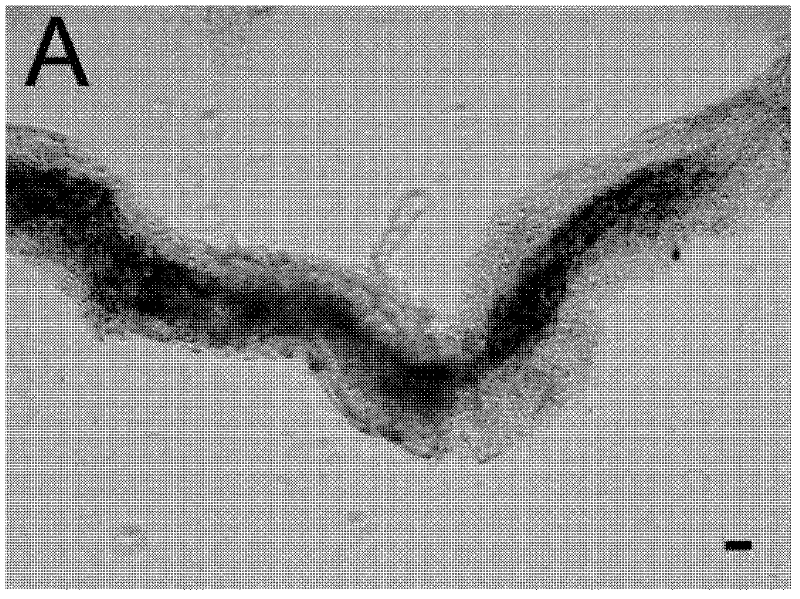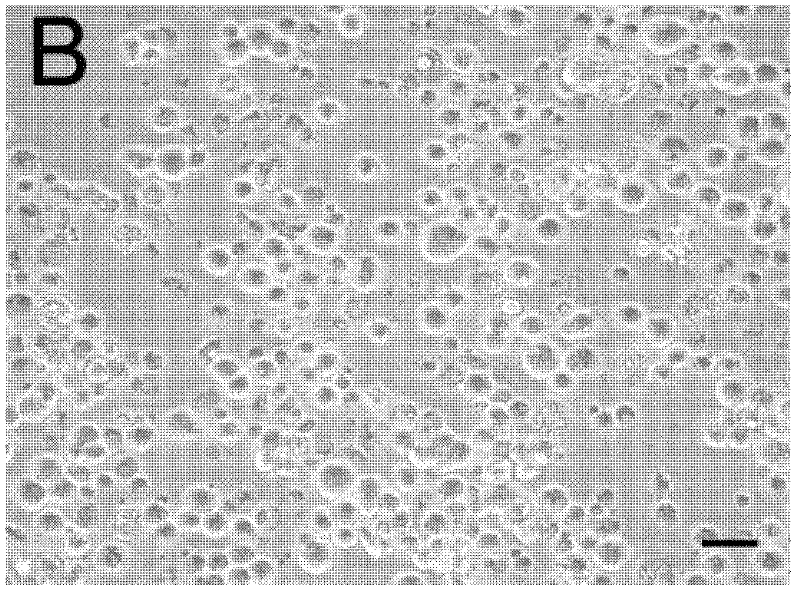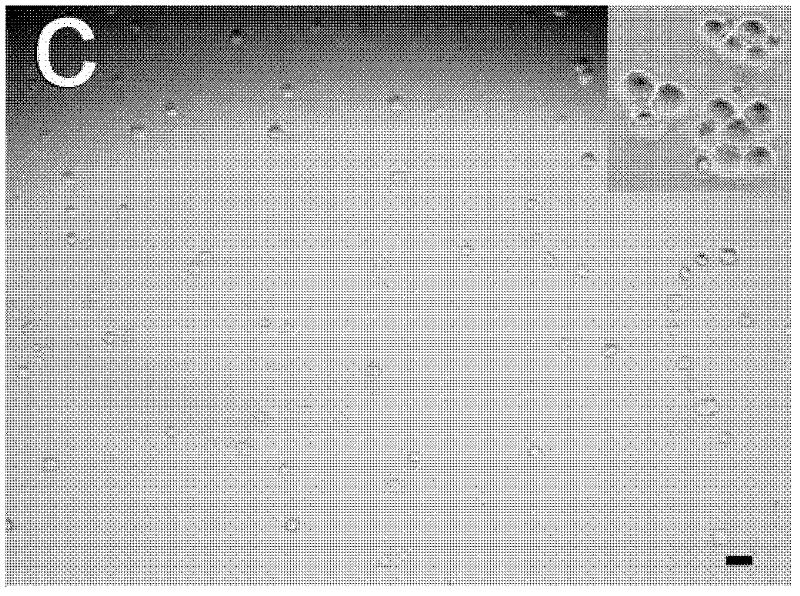Method for separating human spermatogonial stem cells
A technology of spermatogonial stem cells and cells, which is applied in the field of bioengineering, can solve the problems of few isolated cells and low purity, and achieve the effect of high purity and high yield
- Summary
- Abstract
- Description
- Claims
- Application Information
AI Technical Summary
Problems solved by technology
Method used
Image
Examples
Embodiment 1
[0057] A method for separating human spermatogonial stem cells, the steps are as follows:
[0058] 1) Weigh about 1 gram of fresh human testis tissue, place it in 10ml DMEM / F12, and cut it into a volume of about 1×1×1mm 3 Small pieces of tissue were washed 3 times with DMEM / F12 to remove residual blood cells in the tissue.
[0059] 2) Use scissors to cut the testicular tissue to a semi-liquid state, add another 20ml DMEM / F12, and then transfer the tissue to a 150ml container.
[0060] 3) Add digestive enzyme solution I (consisting of a final concentration of 2mg / ml type IV collagenase or type XI collagenase solution and 1μg / μl DNase I) to the shredded tissue in step 2), and place in a 34°C water bath Shake, incubate for 10-15 minutes.
[0061] 4) Microscopic examination to ensure that all tissue pieces have been digested into seminiferous tubules (such as figure 1 shown), transfer the digestion solution containing the seminiferous tubules to another new 50ml centrifuge tube...
Embodiment 2
[0079] Human spermatogonial stem cells were isolated according to Example 1.
[0080] The spermatogonial stem cells were identified by immunocytochemical methods, and the steps were as follows:
[0081] 1) The collected GPR125-positive spermatogonial stem cells or GFRA1-positive spermatogonial stem cells and GPR125- or GFRA1-negative germ cells are subjected to a cell spinner, centrifuged for cell smear, and fixed with 4% paraformaldehyde;
[0082] 2) Wash the cell smear with PBS at room temperature, and block with 200 μl 10% normal goat serum for 30 min;
[0083] 3) Dilute the primary antibody (GPR125, GFRA1, THY1, UCHL1, or ITGA6, or normal rabbit IgG, mouse IgG, negative control with PBS instead of the primary antibody) at 1:200, and incubate at 34°C for 1 hour; after incubation, the cells were incubated with Rinse with PBS;
[0084] 4) Cells were incubated with fluorescein-labeled goat anti-rabbit IgG, or rhodamine-labeled goat anti-rabbit, or rhodamine-labeled goat anti...
PUM
 Login to View More
Login to View More Abstract
Description
Claims
Application Information
 Login to View More
Login to View More - R&D
- Intellectual Property
- Life Sciences
- Materials
- Tech Scout
- Unparalleled Data Quality
- Higher Quality Content
- 60% Fewer Hallucinations
Browse by: Latest US Patents, China's latest patents, Technical Efficacy Thesaurus, Application Domain, Technology Topic, Popular Technical Reports.
© 2025 PatSnap. All rights reserved.Legal|Privacy policy|Modern Slavery Act Transparency Statement|Sitemap|About US| Contact US: help@patsnap.com



